10 Hands-On Activities to Teach Concept Development
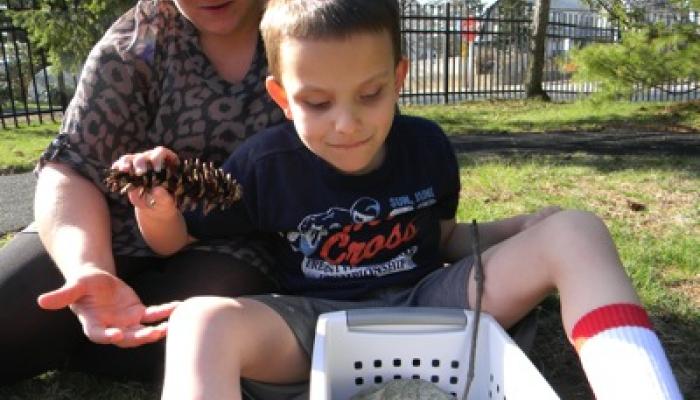
Here are some ideas for hands-on activities to do at home with your children. These activities use items and supplies that you can find around the house.
As you know, concept development is very important in the education of children with visual impairments. Without vision to draw upon for important information about the world, concepts have to be deliberately taught. This includes concepts such as big and little, smooth and rough or bumpy, what makes animals different from one another, what exactly is a tree, etc.
The activities listed here can help develop concepts about the world. Many of them come from the philosophy of Heuristic Learning, or learning by discovery. Remember that young children learn through repetition, so feel free to do these activities many times. You may already be doing many of these activities at home; if so, I hope they spur further creativity!
-
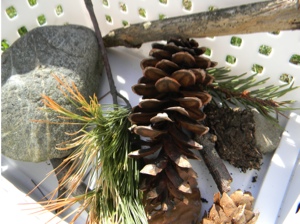 Create a Nature Basket
Create a Nature Basket
Find a good sized container—a wicker basket with a handle is great but a box will do. In the box place items that are found in the natural world: pinecones, pieces of bark from trees, rocks of different textures and sizes, a small branch of a pine tree, small twigs that show how branches come out of one another, leaves, sea shells… anything safe and touchable that occurs in nature. Sit with your child and allow them to safely explore each item. Talk about each item and explain where it comes from. If possible, go on a nature walk and touch these items in the “wild.” A local park or backyard will do! Sit with your nature basket whenever you have a few free moments together.
-
- Nature Walk and Collection: Make a Collage or Nature Book
Find a park or yard and let your child help make a collection of natural items—twigs, pinecones, leaves, etc. Talk about each item as you find it, and then bring it home to make a collage. Strong white glue such as Tacky Glue is great for heavier items. Once the picture is done, let your child touch it frequently so that you can remember your experiences together. You can also glue each item onto a piece of paper, one item per page. Find an unused binder, punch and insert the pages to make a nature book. The book doesn’t have to be long—even 5 items would be great. Sit and read the book frequently with your child, remembering together where you collected the materials. You can make many nature books, or frequently change the pages in your nature book. Seasons change and nature changes!
- Nature Walk and Collection: Make a Collage or Nature Book
-
- Wooden Things Box or Basket
Find a collection of smooth wooden objects—boxes, clothes pins, coasters, rolling pin, spools, wooden spoons, etc. Anything will do as long as it is not splintery. Sit together with your child and feel and explore the wooden objects—feel free to bang, tap, etc. Wood has a warm and natural feel that is very soothing.
- Wooden Things Box or Basket
-
- Metal Things Box or Basket
As with the wooden things, find a collection of safe metal objects—a ring of unused keys, spoons and utensils of all sizes, whisks, lengths of sink plug chain, strainer, measuring spoons, garlic press, etc. Again, explore these together with your child and feel free to bang and tap and listen to the sounds. Metal is loud, and cool to the touch!
- Metal Things Box or Basket
-
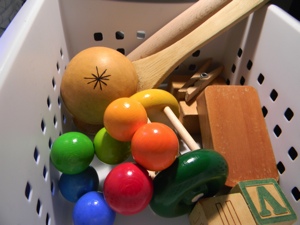 Cloth Textures Box or Basket
Cloth Textures Box or Basket
Find cloth items around the house with different textures—silk scarf, rough washcloth, ribbons, wool items, fleece, velvet, corduroy. Sit together and feel and enjoy the different textures. Does your child have a favorite one?
-
- Mailbox
Cut a slot or hole in the top of a shoebox. Find items that can be “mailed,” such as clothespins, jar lids, old CDs, coasters, pictures you have made and folded to fit, anything that will fit! Dump out and do it again….
- Mailbox
-
- Carrying Things
An old purse or tote bag is great for this. It is especially good if it snaps, zips, or buttons at the top. Go around the house with your child and collect items. Pick a category such as toys, books, clothing, etc. Help your child open the bag, put the item in, close the bag, and carry it around the house. This is a fun way to clean up after play time.
- Carrying Things
-
- Stacking or Nesting
Find household items that stack or nest, such as measuring cups, small pots, metal bowl sets, etc. Fit the items one inside the other, or stack them on top of each other.
- Stacking or Nesting
-
- Story Book and Story Box (or Bag) Activities
Make story time fun by gathering items mentioned in the story and putting them in a box or bag. Take them out at the appropriate moment as you are reading. When reading, vary your voice by changing volume, pace, tone and pitch. Make your voice different for each character. Express moods with your voice and body. Avoid using a sing-songy way of reading, unless it is bedtime and you WANT your child to become sleepy! Keep books fun and exciting. However, remember that young children learn by repetition so don’t hesitate to read the same books over again and again. Check out this article for story box ideas.
- Story Book and Story Box (or Bag) Activities
-
- Math Activities
In our class, we work on early math concepts such as big and little, one-to-one correspondence, matching, counting, sorting, shapes, etc. Any time you can incorporate one of these activities, you are doing math! Some activities to do together are: sorting laundry, sorting and matching socks by size, lining items up by size, singing counting songs like “Five Green and Speckled Frogs.” Compare big and little items. Count all kinds of items into containers. Point out different shapes when you find them—a plate is round, a box is square or rectangular, etc. Go on a shape hunt—go around the house or neighborhood to find all the circles. Play a one-to-one correspondence game: using an egg carton or ice cube tray, help your child place “just one” item in each compartment. Count everything! We always have our fingers and toes to count!
- Math Activities
For more information about concept development and heuristic learning, visit teachingexpertise.com.
Read this article in Spanish: Lea este articulo en Español
Read this article in Arabic: قراءة هذا المقال بالعربية
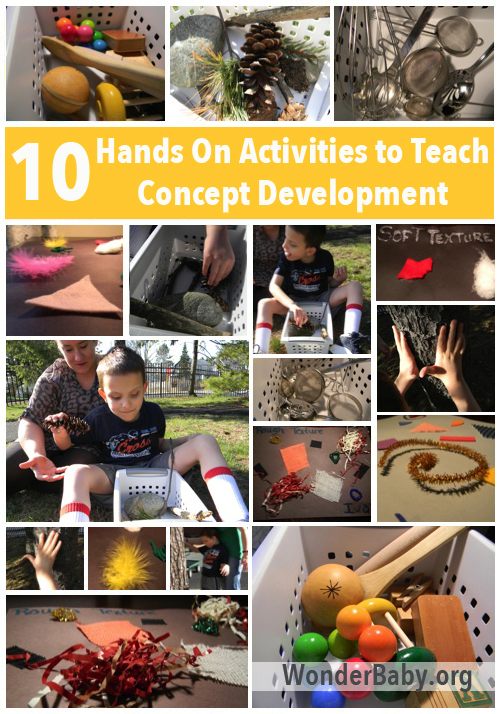
Related Posts
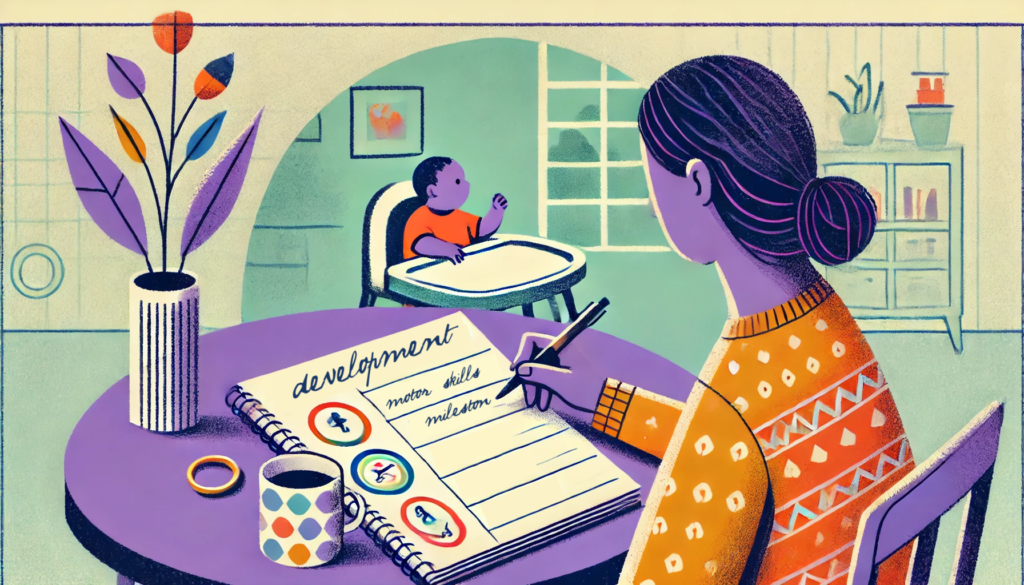
Development, Special Needs
How to Track Milestones for Developmentally Delayed Babies
Parents of developmentally delayed babies can explore practical tools and strategies to track milestones, celebrate progress, and support their child’s unique developmental journey.
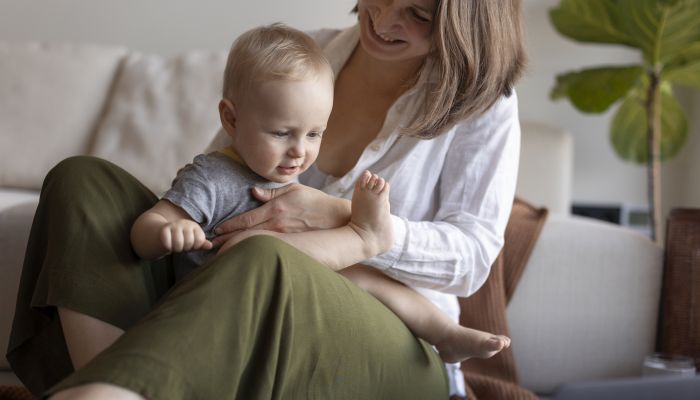
Fine and Gross Motor
5 Alternatives to Tummy Time for Babies with Motor Development Challenges
Does your baby struggle with tummy time due to motor development challenges? These alternatives to tummy time will offer the same benefits.

Development
Should Twins Share a Room?
Wondering if your twins should share a room? We’ll explore the pros and cons of room-sharing for twins right here before you make your decision.